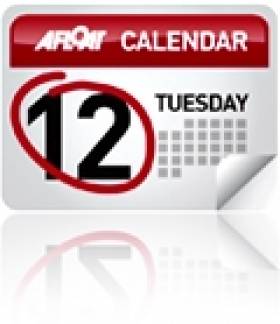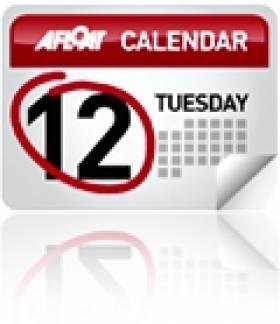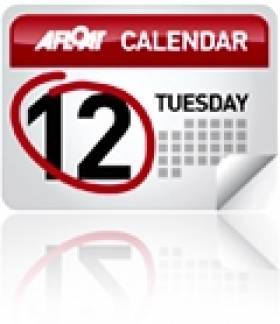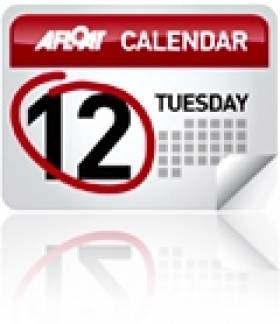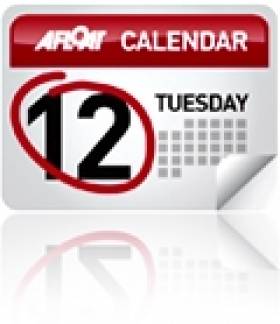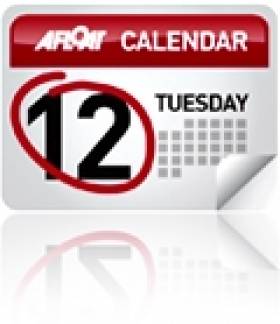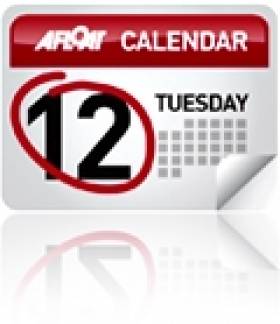Displaying items by tag: Afloat Calendar Dates
Lecture: Smuggling in the Eighteenth Century
#LectureSmugglers – Following Joe Varley's lecture held last week in the Poolbeg Y&BC Marina, Dublin, there's another chance to hear his lecture "Smuggling in the 18th Century".
The lecture is to take place this Thursday (21 February) at 20.00hrs at Stella Maris Seafarers Club, Beresford Place, in the city-centre.
The illustrated talk is hosted by the Maritime Institute of Ireland and is part of the winter/spring lecture programme.
Varley will demonstrate why the 18th century is regarded as the golden age of smuggling. This contention will be examined from mainly the viewpoint of the smuggler.
Examples of Irish and British smuggling activity will be given, including a detailed example of wool smuggling from Roundstone in Connemara in the 1730's.
The Stella Maris is located close to the Irish Life Mall car park (ILAC), the Customs House and Busaras. It is convenient to the Luas (Red Line: Busaras stop) and DART (either Connolly or Tara Street stations).
The Maritime Institute has a maritime museum, the National Maritime Museum of Ireland located in Dun Laoghaire. Co. Dublin. For further details on lectures, museum and more click HERE.
Grand Concert to be Aired In former Church
#GrandConcert- Musicians at the dawn of their careers, are to join some of the most experienced performers in Ireland, next Thursday (24 January) in the National Maritime Museum of Ireland, once a place of worship for Church of Ireland parishioner's in Dun Laoghaire.
Performers are Norah O'Leary On Cello – Brahms, Bach and Massenet
On Song -Soprano – Sophie O'Carroll and Tenor – Phillip Scott, Thomas Moore and Gershwin Caro Mio Bene, I hear you calling me, Kerry Dance at the Midnight Hour – Someone to watch over me.
EvelinaNdlovu – On Piano- 3 Argentine Dances Flute Quartet
Two pieces by George Gershwin:
Oh, Lady Be Good, Sweet and Low Down, Easy Winners – Scott Joplin
Overture to The Marriage of Figaro
"Scherzo" from "A Midsummer Night's Dream" Felix Mendelssohn
The Grand Concert starts at 7.30pm, where an admission of €10.00 is payable at the door.
Jeanie Presents Gifts Out of the Bottle
#TALLSHIP EVENTS– Once again the unique venue of the tallship Jeanie Johnston plays host to maritime heritage lectures and live music sessions throughout early 2013,writes Jehan Ashmore.
Resuming the 'Below the Surface' lectures series on 2 January will be a talk about Grace O'Malley - Ireland's Maritime Icon, one of history's most extraordinary mariners, presented by Anne Chambers.
A month later on 2 February, Juliet Turner a singer/songwriter from Tummery, near Omagh, launches the inaugural session of the New Year. In the course of her career she has opened up for artists among them Bob Dylan, U2 and Bryan Adams. Other performers lined-up for the Jeanie Sessions are Caroline Moreau and The Dunne & Hernandez Duo.
So if you are looking for a gift idea for the history buff or music lover in your life then perhaps consider as a stocking filler, which are available to purchase. For further information on lecture and gig tickets visit: www.jeaniejohnston.ie/events-page.html
The 'Jeanie' is berthed at Custom House Quay close to the Sean O'Casey foot-bridge in Dublin's city centre. In addition the replica 19th century barque is also a museum which tells the story of mass emmigration during the famine.
Below the Surface Lecture: Sir Ernest Shackleton – a Family Perspective
#JEANIE LECTURES – Having started this month, the 'Below the Surface' series of six lectures is a celebration of Ireland's maritime heritage and archaeology. They are held on the first Wednesday of each month on board the replica 19th century barque Jeanie Johnston in Dublin Docklands. The next lecture on 5th December is about Sir Ernest Shackleton, one of Irelands greatest polar explorers.
The talk presented by historian and guide - Jonathan Shackleton will give a unique insight by delving into his family background of the polar explorer and for his reputation and growth in four expeditions to Antarctica.
Doors open at 7.15pm (lecture starts 8pm) and those attending will experience an intimate space ideal for maritime tales, oozing with seafaring ambience with the creaking sounds of the hull.
It is advisable to arrive early as entry to venue will not be possible upon commencement of the lecture venue. The emmigrant famine museum ship is berthed alongside Custom House Quay. To book online tickets costing €15 each, click the link HERE
Museum Festive Concert: Il Coro Italiano di Dublino
#MUSEUM CONCERT – Getting into the festive spirit on Saturday 1 December will be a concert of opera choruses, folk songs Christmas music and distinguished soloists performed by "Il Coro Italiano di Dublino" in the National Maritime Museum of Ireland, Dun Laoghaire.
Il Coro Italiano di Dublino was founded in 1986 by Dr. Rosa Maria Chicco-Ferraro, Deputy Head of Mission at the Italian Embassy in Dublin at that time. The present name of the choir was adopted in 2002.
Tickets cost €10 each for the concert that starts at 7.30pm in the renovated surroundings of the former Mariners Church. For further events and daytime visiting hours (including Mondays) of the museum visit: www.mariner.ie
#IRISH SEAFARERS –In an update to the annual National Commemoration Services for Irish Seafarers to be held in Dublin and Cork on Sunday (25 November), the capital's commemoration will commence with a Memorial Mass at 11:30am in the Church of the Immaculate Conception at City Quay.
Wreaths will be laid at the Irish Seaman's National Memorial which is located also on City Quay, close to Pearse Street DART station. Light refreshments will be available during this occasion. After a break for lunch the company will reassemble for Evensong at 3.15 pm in St. Patrick's Cathedral.
The commemoration in Cork City will also be held on the same Sunday at 12.00 noon with an ecumenical service in the Board Room of the Port of Cork Company offices on Customs House Quay, Cork.
Sea Shanties Sessions Aboard the ‘Jeanie’
#MUSIC AFLOAT – Garland are returning to the Jeanie Johnston to perform more of their wonderful work songs and shanties!...this coming Saturday 17th November (open from 7.15 for start at 8pm).
Garland are a Dublin-based a capella group formed in 1970. The four-some are Pat Sheridan, Denis Ryan, Michael Andrews and Paul Noyes and forty years later they are still enthralling audiences with their exquisite four part harmonies.
A shanty is a type of work song that was once commonly sung to accompany labour on board large merchant sailing vessels. Shanties became ubiquitous in the 19th century era of the wind-driven packet and clipper ships.
The apt venue of the replica 19th century emigrant barque is where previous sessions have been held on board and from a wide variety of musical genres. The sessions take place below decks in the main saloon where space is strictly limited to 80 persons.
To locate the ship, she is moored on the north quays along Custom House Quay in the heart of the Dublin 'Docklands' quarter. For further information or to book tickets (€10) online click HERE
Museum FUNdrasier: Crazy Bingo Night
#MARITIME MUSEUM – Help to raise funds for the National Maritime Museum in Dun Laoghaire as a Crazy Bingo Night with drag-queen Annie Balls is to take place on Saturday 17 November.
Will you be the lucky one to win a money prize or a Booby prize!...find out by attending the event held in the Sallynoggin Inn (doors open 8pm).
Tickets costing €10.00 include 5 games of Bingo and are available from the venue's off-license contact Tara or Katie on 01 214394 or from the museum on Haigh Terrace off Georges Street.
As for the museum which is mostly wheelchair accessible, visiting hours (Everyday) are 11am-5pm. Asides the many exhibits on display, there's a museum shop, a coffee dock and a Wi-Fi hotspot. For further information call 01 2800969 and www.mariner.ie
Lecture: “Lady Nelson” Lost on the Skelligs
#LECTURES – In addition to the Killiney & Ballybrack Historical Society's hosting of a lecture about the "Lady Nelson" (on 14 Nov) recently reported on Afloat.ie, the talk will also be hosted this month by the Maritime Institute of Ireland (M.I.I.).
Jim Robinson will present the M.I.I. lecture on 15th November (8pm) about the vessel that traded between Dublin and Spain and in which was wrecked on the Skelligs Rock in 1809. The talk will also give an account of trading links with Spain during that time.
The lecture is to be held at the Stella Maris Seafarers Club, Beresford Place, close to the LUAS (Red) Line (Busaras Stop) and the DART stations (Connolly and Tara Street). Car parking is available at the Irish Life Mall on Lower Abbey Street.
Please note that other lectures organised by the M.I.I. may be held in other locations, for more visit www.mariner.ie
Lecture: The People of "Lady Nelson"
#LECTURES – Following last month's opening lecture, the Killiney & Ballybrack Historical Society will be hosting a talk presented by Jim Robinson on 14 November.
The topic "Lady Nelson" The People of Lady Nelson, was a vessel that traded between Dublin and Spain and in which was wrecked on the Skelligs Rock in 1809. The lecture will give also give an account of the trade with Spain at that time.
The lecture programme which runs till April 2013, are as usual held on the second Wednesday of each month and in the upstairs lounge of the Graduate Pub in the Killiney Shopping Centre on Rochestown Avenue.
An admission fee €3 applies for each talk and refreshments will be provided. Should you be interested in joining the society, the annual subscription is €15 (€20 for couples/family).
For further details please contact: Richard Dolan 087 618 1212, Anna O'Connor (01) 285 2817 and Tom Moran (01) 284 0524.


























